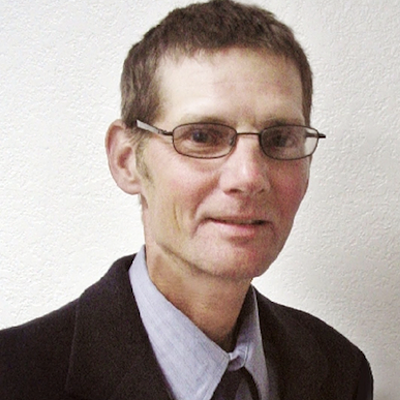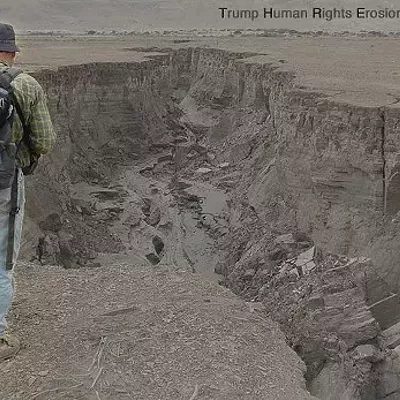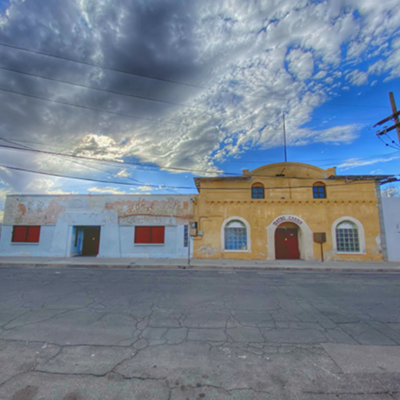"We love it!" exclaims Raymond Platt and Elizabeth Pifferrer, a senior couple visiting Tucson from the East Coast. "The zoo has little alcoves where you can rest, and it's clean and beautiful."
What started out four decades ago as a simple concept in then-City Parks Director Gene Reid's mind has evolved into 17 acres of relaxing wonderland which now attracts 435,000 visitors yearly. Building on that success, zoo officials have a smorgasbord of improvements planned to make the future experience even better.
Anticipating a groundbreaking in August for a new Conservation Learning Center, Zoo Administrator Susan Basford is excited about what it will mean to replace the current 900-square-foot education building she labels as "decrepit."
"It will be amazing," Basford indicates of the new $4 million center, which will have up to 10,000 square feet of space and should be open by next summer. Basford believes the structure will better accommodate visitors, staff members and the zoo's 100 volunteers.
Plus, Basford adds, the new building will help the zoo increase the number of its fee-based educational programs. "We can't wait," Basford gushes.
Before work begins on that project, the two-month construction period of the privately funded "Kenya Get Wet" attraction should be underway. Providing an interactive experience for young children, the facility will resemble a miniature African village.
"It will show what some people need to do to get water," Basford explains, "while letting kids have fun without getting soaked." All the water will be recycled for use on the zoo's landscaping.
One green area where that water can be used is at the former rhinoceros enclosure. The huge, armored beasts have been moved to a new site, and a grassy lawn has replaced their dirt yard.
Planning to utilize a UA landscape architecture class this fall to help design the space, Basford sees many potential uses for the area. "Overnight camps (for children) could be held there," she says, "along with events or small concerts."
Concerns about the animals being disturbed by these evening uses don't worry the zoo administrator. "We've not had problems with nighttime activities," Basford points out. "The animals can choose to be inside or out (in their enclosures)."
With these three pending changes all on the drawing board, the zoo has also recently implemented some new fundraising programs. One is the Giraffe Encounter, where for $2, people feed the animals while learning more about them from their keeper.
"It's very up-close," Basford says of holding a biscuit for a giraffe to grab with its long, swirling tongue.
Also available is the Zoo Express, a little train which chugs around Reid Park. "We were challenged to come up with new revenue sources by the City of Tucson staff," Basford says of the $2 ride, "and it's been very successful. Plus, it's fun."
The anticipated zoo change, which has generated the most media attention--and the most criticism--is the new home for the two elephants. While some people suggested relocating the giant creatures to a sanctuary, the Tucson City Council has given the go-ahead for a three-acre enclosure costing $8.5 million, one-half of which will be raised from private sources.
Basford thinks design work on the facility will start soon, and hopes construction can begin in 2008. But, she stresses, the timeline depends on a bond election that hasn't even been scheduled yet.
The new elephant enclosure will be part of a seven-acre zoo expansion which will take the grounds south to 22nd Street. Dedicated to African animals, Basford dreams of the possibilities for this enlarged area.
"Maybe a cheetah or leopard," she speculates of future additions to the zoo, "and warthogs. We've never had warthogs." Plus, the zoo administrator suggests, an additional antelope species could be located there, along with the zoo's current zebras, but those changes are dependent upon funding.
Starting with the opening of the South American exhibit a few years ago, the Reid Park Zoo has been slowly transforming itself into a facility focused around zones devoted to specific continents. "We'd like visitors to know about the cultures of these places as well as the animals," Basford explains of the zoo's adopted long-range master plan.
Calling the size of the zoo "intimate" and "manageable," Basford observes: "It feels bigger than it is. There's a surprise around every corner."
Donna Warfield thinks all the planned changes are going to be extremely rewarding. As president of the 10,000-member Tucson Zoological Society, Warfield sees a bright future ahead for the facility.
"The zoo's already looked at as a little jewel," Warfield says, "and it could become a major draw (for Tucson). I'm so excited about the things coming up. They will enhance the community and provide tremendous opportunities for educating children."
Al and Mary Moritz are already well satisfied. While watching their children have a good time, Al says proudly that he visits weekly with his two young sons.
"Everyone is friendly, and it's clean," he proclaims. "The zoo's great."








